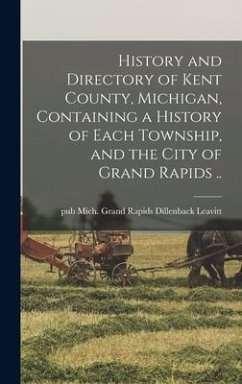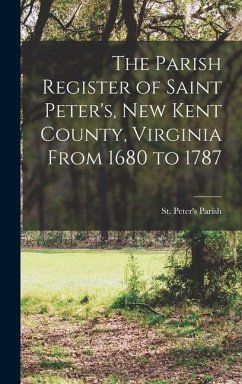
The First Commander of Kent Island
Versandkostenfrei!
Versandfertig in über 4 Wochen
26,99 €
inkl. MwSt.
Weitere Ausgaben:

PAYBACK Punkte
13 °P sammeln!
âThe First Commander of Kent Islandâ delves into the life and times of William Claiborne, a prominent figure in the early history of the Chesapeake Bay region and a key player in the establishment of the first European settlement on Kent Island. Sebastian Ferris Streeter meticulously recounts Claiborne's ventures, shedding light on his role as a pioneer, trader, and, notably, the first commander of Kent Island. This historical account offers insights into the challenges and triumphs of early colonial life, the interactions between settlers and native populations, and the political landscape ...
âThe First Commander of Kent Islandâ delves into the life and times of William Claiborne, a prominent figure in the early history of the Chesapeake Bay region and a key player in the establishment of the first European settlement on Kent Island. Sebastian Ferris Streeter meticulously recounts Claiborne's ventures, shedding light on his role as a pioneer, trader, and, notably, the first commander of Kent Island. This historical account offers insights into the challenges and triumphs of early colonial life, the interactions between settlers and native populations, and the political landscape of the era. Streeter's narrative provides a valuable perspective on the evolution of Maryland and its surrounding territories. Through detailed research and compelling storytelling, âThe First Commander of Kent Islandâ paints a vivid portrait of a man whose ambition and leadership shaped the course of early American history, making it a must-read for anyone interested in the colonial period. This work has been selected by scholars as being culturally important, and is part of the knowledge base of civilization as we know it. This work was reproduced from the original artifact, and remains as true to the original work as possible. Therefore, you will see the original copyright references, library stamps (as most of these works have been housed in our most important libraries around the world), and other notations in the work. This work is in the public domain in the United States of America, and possibly other nations. Within the United States, you may freely copy and distribute this work, as no entity (individual or corporate) has a copyright on the body of the work. As a reproduction of a historical artifact, this work may contain missing or blurred pages, poor pictures, errant marks, etc. Scholars believe, and we concur, that this work is important enough to be preserved, reproduced, and made generally available to the public. We appreciate your support of the preservation process, and thank you for being an important part of keeping this knowledge alive and relevant.












![The Banner Display'd: Or, an Abridgment of Guillim [In His Display of Heraldrie] by S. Kent Cover The Banner Display'd: Or, an Abridgment of Guillim [In His Display of Heraldrie] by S. Kent](https://bilder.buecher.de/produkte/66/66968/66968374n.jpg)